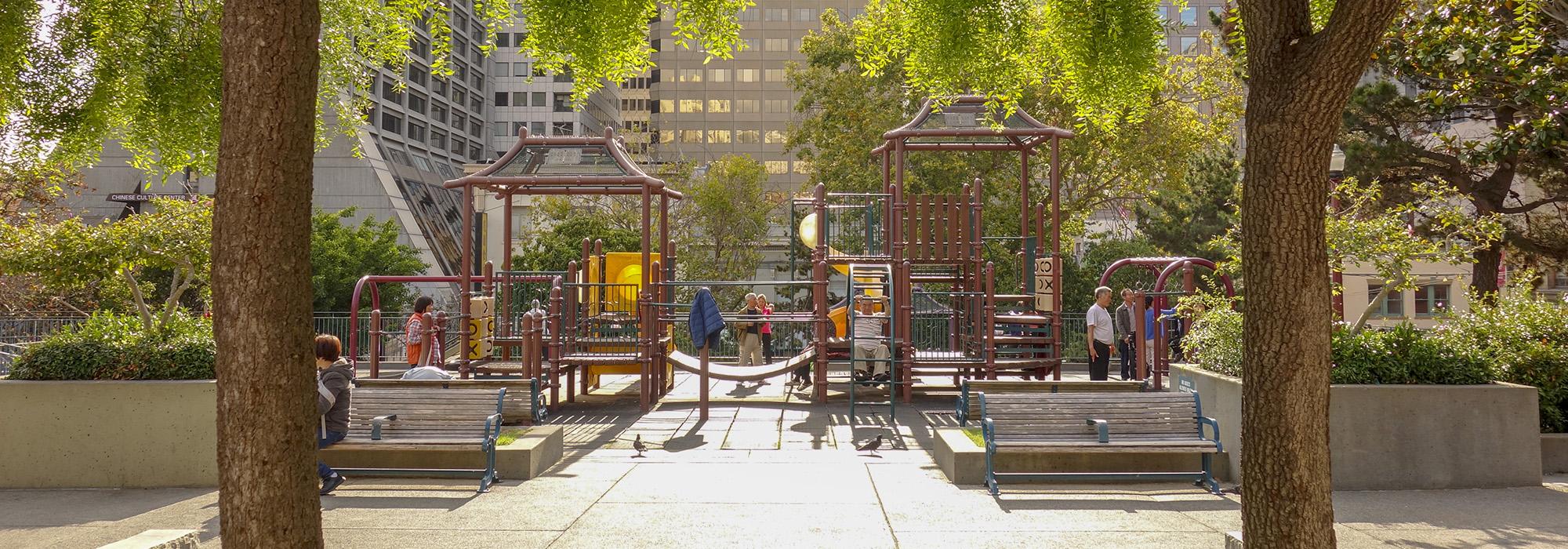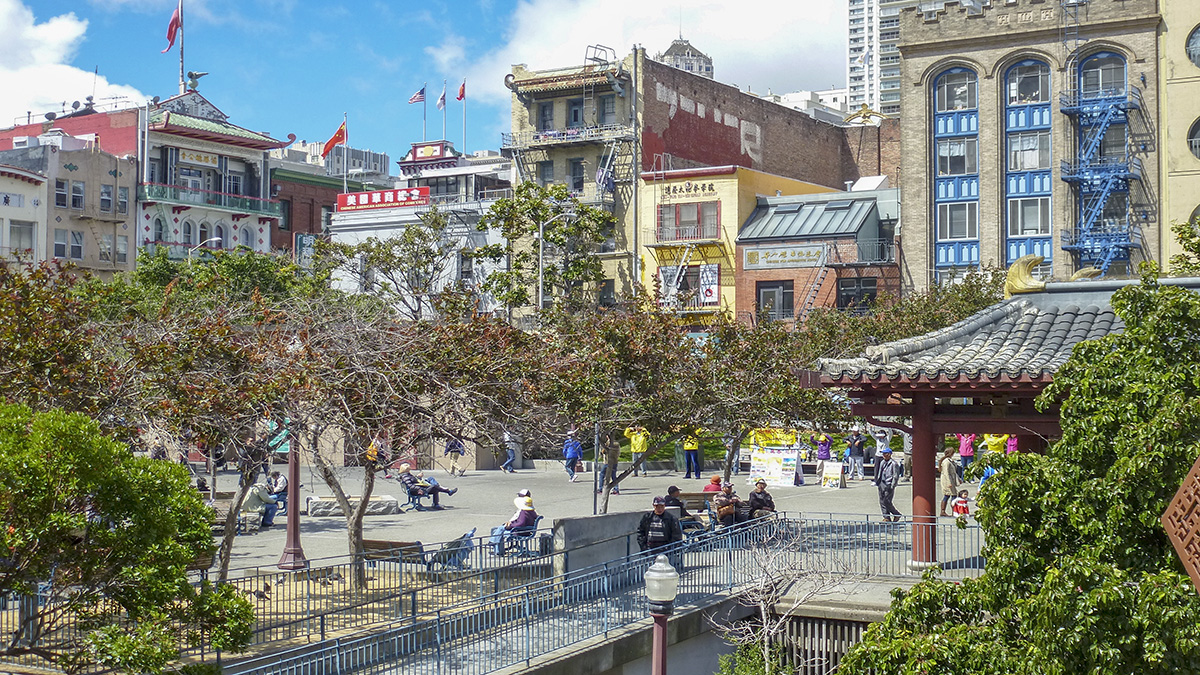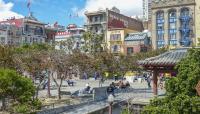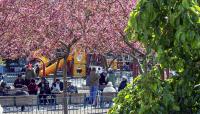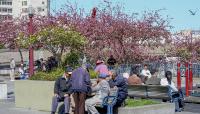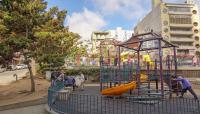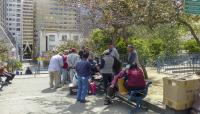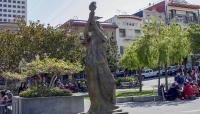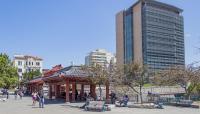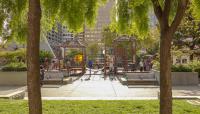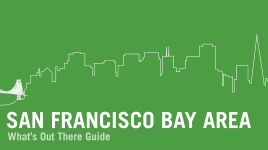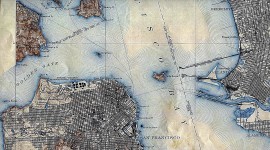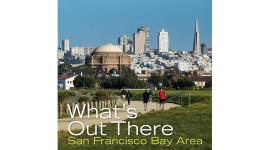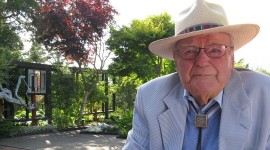Landscape Information
San Francisco’s oldest public space was established in 1833 as the civic center of the Mexican township of Yerba Buena. The city purchased the 1.3-acre square in the 1850s from private landowners, naming it after the U.S.S. Portsmouth, the ship whose crew first claimed the settlement on that spot in 1846 during the Mexican-American War. From the announcement that launched the gold rush to celebrations following the state’s admittance to the Union, the plaza has served for nearly two centuries as a stage for the city’s civic life. The initial plaza was demolished following the construction of a four-level, below-ground parking garage in 1961. The design went through several iterations, starting with an unrealized plan by Douglas Baylis. In 1962 landscape architect Robert Royston split the plaza into two levels with a series of pergolas and a play area. Royston was retained again in 1968 to design two separate playgrounds. The city initiated a phased renovation of the square from 1991 to 2001, updating park amenities, adding a clubhouse, and significantly altering Royston’s design.
Called the “Heart of Chinatown,” the plaza’s architectural features, with curved tiled roofs and red columns, reflect the surrounding neighborhood’s cultural heritage. The square is edged with and accented throughout by concrete planters of varying dimensions, containing ginkgo, flowering pear, magnolia, Japanese maple, cherry, pine, and sycamore trees. The upper level consists of large event spaces, seating areas, a pergola, and a playground, and is connected to the Chinese Culture Center inside the Hilton San Francisco Financial District Hotel by a brick-paved pedestrian bridge which spans Kearny Street. The lower level features smaller gathering spaces, a play area, and a clubhouse beneath the pedestrian bridge. A monument to author Robert Louis Stevenson commemorates the inspiration he found for many of his works by overhearing sailors’ stories in the plaza.



